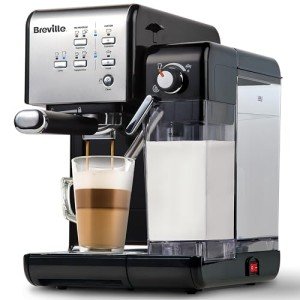The Rise of Home Espresso Machines: A Comprehensive Guide
As coffee lovers continue to look for fresh and flavorful brews at home, the popularity of home espresso machines has risen in recent years. No longer just the domain of coffee shops and cafe, these machines empower individuals to craft barista-quality espresso drinks from the comfort of their kitchens. This short article will explore the different kinds of home espresso machines, their functions, and considerations for selecting the right one. In addition, it will offer a selection of FAQs to help prospective buyers make informed decisions.
Types of Home Espresso Machines
Home espresso machines can be categorized into several categories based upon their mechanisms and user-friendliness. Espresso Machines With Milk Frother has its unique functions, pros, and cons.
| Type | Description | Pros | Cons |
|---|---|---|---|
| Manual Espresso Machines | Needs the user to manually control the brewing procedure, involving techniques like pulling a lever to develop pressure. | - Complete control over developing process - Compact style | - Requires ability and practice - Time-consuming |
| Semi-Automatic Machines | Machine automates water circulation and pressure, but the user still controls the dosing and period of the developing procedure. | - Balance of automation and control - Versatile | - Learning curve for refining methods |
| Totally Automatic Machines | Automates the whole developing process, from grinding to developing, frequently with programmable settings for tailored drinks. | - Extremely user-friendly - Quick and hassle-free | - Less control over the developing procedure - Higher price point |
| Pill or Pod Machines | Uses pre-packaged espresso capsules or pods to produce coffee quickly and easily. | - Extremely easy to use - Minimal clean-up | - Limited flavor variety - More costly per cup than ground coffee |
| Super-Automatic Machines | Integrates features of completely automatic machines with integrated mills, permitting users to brew entire bean espresso and milk-based drinks with one touch. | - All-in-one benefit - Ideal for milk-based beverages | - Often the most costly - Can be large |
Features to Consider
When selecting a home espresso machine, possible buyers must think about the following functions to guarantee they select a machine that meets their requirements:
Grinder Type:
- Built-in grinders can supply fresher premises but may need more upkeep.
- Different mills permit more modification of grind size.
Pressure:
- Look for machines that produce a minimum of nine bars of pressure, which is ideal for developing espresso.
Water Temperature Control:
- Machines with adjustable temperature level settings allow for better extraction of flavor from beans.
Milk Frothing Options:
- Consider whether you want a manual steam wand for frothing or an automatic milk frother for benefit.
Relieve of Cleaning:
- Machines with detachable parts and self-cleaning functions significantly minimize clean-up time.
Size and Design:
- Ensure the machine fits easily in your cooking area and aligns with your aesthetic preferences.
Budget:
- Set a budget before starting your search, as costs can range significantly from affordable designs to high-end machines.
Advantages of Home Espresso Machines
Owning a home espresso machine offers many advantages:
- Cost-Effective: Over time, developing espresso in the house can save coffee lovers money compared to regular café sees.
- Modification: Users can experiment with various beans, grind sizes, and developing methods to find their ideal cup.
- Convenience: The capability to brew espresso whenever eliminates the need to head out to a coffee shop, particularly helpful during late nights or mornings.
- Quality Control: With a home machine, individuals have complete control over the quality of components and developing procedures.
Downsides of Home Espresso Machines
However, there are some downsides to consider:
- Initial Investment: High-quality espresso machines can be costly, needing a substantial in advance financial investment.
- Knowing Curve: Mastering the art of espresso brewing can take time and practice, which might be frightening for novices.
- Upkeep: Like any appliance, espresso machines need regular cleaning and maintenance to make sure optimal efficiency.
FAQs
1. What is the best kind of home espresso machine for beginners?
Answer: For newbies, a semi-automatic machine is frequently recommended as it provides a balance between control and automation, allowing you to discover the basics without overwhelming complexity.
2. How much should I invest in a home espresso machine?
Response: Entry-level machines can begin around ₤ 100 to ₤ 300, while higher-end designs can range from ₤ 500 to over ₤ 2000. It's vital to set a budget based on your expected use and desired functions.
3. Do I require a separate grinder?
Response: While some espresso machines come with built-in mills, buying a separate grinder enables for higher customization and guarantees much better quality grounds.
4. How frequently should I clean my espresso machine?
Response: Cleaning frequency can differ by machine type, but it's usually advised to clean up the machine after each use and perform deep cleanings weekly or regular monthly, depending on usage.
5. Can I make milk-based beverages with any espresso machine?
Response: Not all machines come with milk frothing capabilities. If you delight in drinks like lattes or cappuccinos, look for a machine with a steam wand or automatic frother.
Home espresso machines are transforming the way coffee aficionados enjoy their beloved brews. With various types and advanced functions offered in the market, there is something for everybody. Whether it's the happiness of developing unique dishes or merely relishing the ideal shot of espresso, purchasing a home espresso machine can boost both the coffee-drinking experience and the quality of life for coffee fans all over. As with any financial investment, it is essential to weigh the benefits against the prospective drawbacks and choose a machine that seamlessly fits both your way of life and choices.

